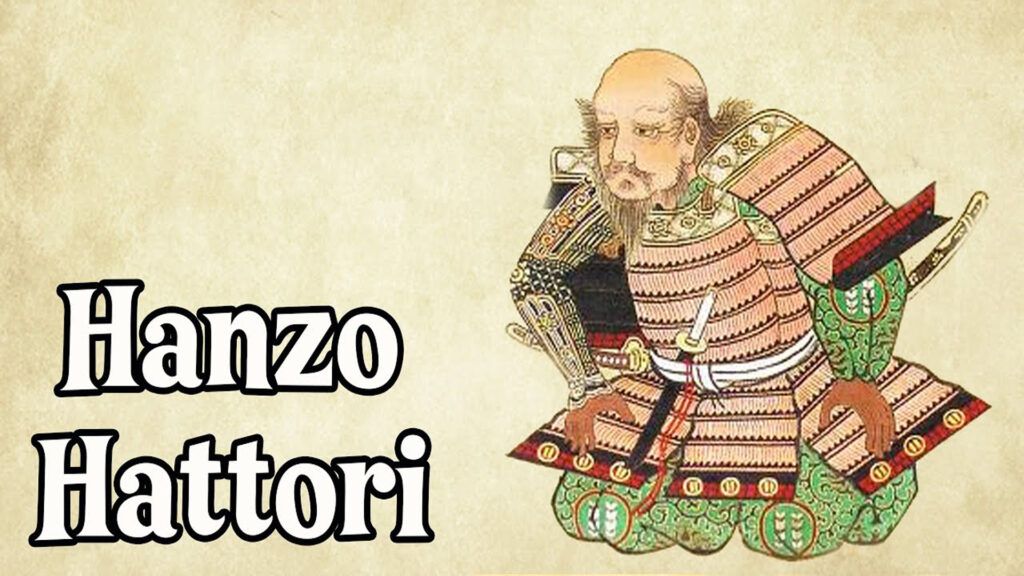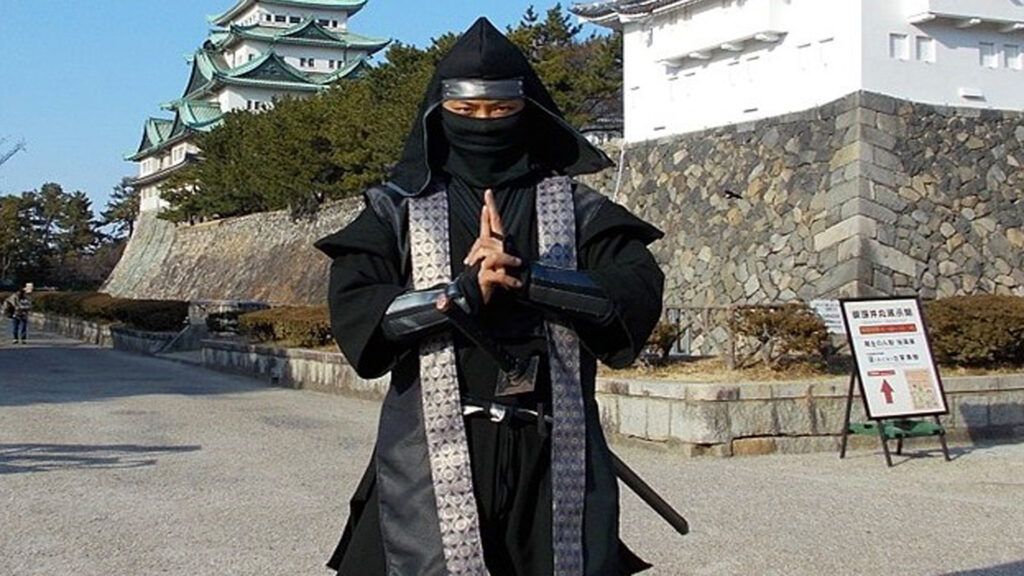
Ninja Hattori Hanzo is a fascinating figure in Japanese history, renowned for both his legendary ninja skills and significant contributions to samurai culture. Born in 1541 in the province of Iga, Hattori grew up in a time marked by political unrest and intrigue. His family belonged to a long line of ninjas dedicated to the arts of disguise, espionage, and martial arts.
From a young age, Hattori displayed exceptional talent in the art of ninjutsu. He was taught the secret techniques and strategies of ninja training by his father, a respected ninja master. Under his father’s strict guidance, Hattori learned the art of disguise, the ability to move silently, and the mastery of combat with various weapons.
As Hattori reached adulthood, he entered into the service of the powerful Daimyo Tokugawa Ieyasu, who would later become one of Japan’s most significant shoguns. Tokugawa recognized Hattori’s potential and appointed him as his personal ninja bodyguard. This position brought Hattori into contact with the highest circles of power and bestowed upon him immense political significance.
Hattori’s role as Tokugawa’s bodyguard and advisor made him a key figure in the political power struggles of his time. In an era where betrayal and intrigue were commonplace, Tokugawa trusted Hattori implicitly, relying on his loyal services to monitor and combat his enemies.
In addition to his duties as a bodyguard, Hattori was also a master strategist, renowned for his brilliant tactics on the battlefield. Throughout the numerous battles and conflicts that shook feudal Japan, Hattori repeatedly demonstrated his ability to surprise and overcome enemy forces.
One of the most famous stories about Hattori is his role in rescuing Tokugawa during the Battle of Mikatagahara in 1573. When Tokugawa’s troops were surrounded by an overwhelming enemy army, Hattori led a daring rescue mission to save his lord. Through his skillful planning and courageous action, Hattori managed to safely escort Tokugawa out of harm’s way, averting a catastrophic defeat.
This heroic deed made Hattori a legend throughout Japan and solidified his reputation as one of the greatest ninjas of all time. However, Hattori’s contribution to samurai culture did not end with his heroic deeds on the battlefield. After Tokugawa gained power over all of Japan and the Tokugawa Shogunate was established, Hattori played a crucial role in stabilizing the realm and promoting peace and order.
As an advisor and confidant to the shogun, Hattori advocated for reforms that improved the lives of people throughout Japan. He promoted the expansion of infrastructure projects, the development of trade and economy, and the advancement of education and culture. Under his leadership, the Tokugawa realm flourished, becoming a thriving and prosperous society.
Yet, despite his significant contributions to samurai culture and Japanese history, Hattori Hanzo is primarily remembered as the legendary ninja who captured the hearts of people with his extraordinary skills and unwavering courage. His legacy lives on in the stories and legends passed down from generation to generation. Ninja Hattori Hanzo will always be remembered as an icon of Japanese history and culture.
And thus concludes our glimpse into the life and work of Ninja Hattori Hanzo, a figure who not only shaped the history of Japan but also inspired the imagination of people around the world. May his legacy continue to live on eternally, reminding us that even in the darkest times, a single individual can change the course of history.
The combat techniques of Hattori Hanzo

One of the most distinctive features of Hanzo’s fighting style was his mastery of traditional ninja weapons. These included throwing knives (shuriken), throwing stars (senbon), throwing arrows (shaken), and the blowgun (fukiya). Hanzo not only had the ability to throw these weapons with deadly precision but also to skillfully integrate them into close combat. His swift and precise attacks made it nearly impossible for his opponents to evade or block his strikes.
Furthermore, Hattori Hanzo mastered a variety of close combat techniques that allowed him to excel in direct combat as well. He was a master of taijutsu, the art of unarmed combat, and proficient in a variety of striking, kicking, and throwing techniques. His movements were fluid and elegant, and he utilized his speed and agility to always stay one step ahead of his adversaries.
Another crucial aspect of Hanzo’s fighting style was his ability to concealment and deception. As a ninja, it was his duty to remain unnoticed and strike from the shadows. Hanzo was a master of camouflage techniques that allowed him to move silently and invisibly through the darkness. He could perfectly read his surroundings and adapt to approach his enemies unnoticed and strike unexpectedly.
In addition to his individual skills, Hattori Hanzo was also a brilliant strategist who cleverly employed his combat techniques to achieve his goals. He knew how to exploit the weaknesses of his opponents and anticipate their movements to lure them into traps. His tactical brilliance and strategic thinking made him a feared adversary on the battlefield.
Hanzo’s combat techniques were not limited to physical combat but also encompassed a pronounced mental component. He was a master of psychology, recognizing the weaknesses of his opponents and exploiting them to defeat them. Through cunning deception and manipulation, he could lead his opponents into making mistakes and exposing themselves, giving him a decisive advantage in combat.
Overall, Hattori Hanzo was a consummate warrior who, with his outstanding combat techniques and unparalleled mastery of ninjutsu, became a legend. His influence on martial arts is still felt today, and his legacy lives on in the hearts of those who hear his story and study his techniques. May his legacy endure forever, reminding us all that true strength lies not only in combat but also in mastering the mind.

Hattori Hanzo carried out numerous outstanding heroic deeds that made him a legend. One of his most remarkable feats occurred during the Battle of Mikatagahara in 1573. When the troops of his lord, Tokugawa Ieyasu, were surrounded by an overwhelming enemy army, Hanzo executed a daring rescue mission. Using his own life and extraordinary skill, he successfully escorted Tokugawa to safety from the danger zone, averting a catastrophic defeat.
Another outstanding heroic deed of Hattori Hanzo was his contribution to the founding of the Tokugawa Shogunate. As a close confidant of Tokugawa Ieyasu, Hanzo played a crucial role in stabilizing Japan after years of civil war and unrest. His efforts for peace and order significantly contributed to the Tokugawa realm flourishing into a golden age of prosperity and cultural development.
Furthermore, Hattori Hanzo demonstrated his exceptional skills as a strategist and warrior in numerous battles and conflicts. His brilliant tactical decisions and courageous actions on the battlefield repeatedly surprised enemy forces and significantly contributed to the success of his rulers.
Overall, Hattori Hanzo’s most outstanding heroic deeds are a testament to his extraordinary courage, unwavering loyalty, and superior skills as a ninja and strategist. His deeds are revered in Japanese history to this day, making him an immortal legend.
The Legacy of Hattori Hanzo

Hattori Hanzo’s legacy extends far beyond his time, leaving a lasting impact on Japanese culture and history. As one of the most famous ninjas of all time, Hanzo has not only left behind his combat techniques and strategic abilities but also a legacy of bravery, loyalty, and honor.
One of Hattori Hanzo’s most significant legacies is his contribution to the development of the ninja art. As a master of ninjutsu, he not only perfected traditional combat techniques but also developed new methods and strategies that are still studied and applied by ninjas worldwide today. His innovations have contributed to making ninjutsu one of the most sophisticated and effective martial arts in the world.
Furthermore, Hattori Hanzo left a lasting impression on samurai culture. As a close confidant of Tokugawa Ieyasu, he played a crucial role in the establishment of the Tokugawa Shogunate and the stabilization of Japan after years of civil war and unrest. His dedication to peace and order helped the Tokugawa realm flourish into a golden age of prosperity and cultural development.
However, Hattori Hanzo’s legacy transcends the realms of martial arts and politics, manifesting in the values and ideals he embodied. Hanzo was not only a skilled warrior but also a man of honor and integrity, always true to his principles and fighting for what he believed in. His example continues to inspire people around the world to stand up for justice, freedom, and truth, even if it means swimming against the tide.
Another significant aspect of Hattori Hanzo’s legacy is his role as a symbol of Japanese identity and culture. His stories and legends have been passed down for centuries from generation to generation, shaping the image of the brave and honorable ninja in popular imagination. His name has become synonymous with courage, skill, and superiority, with his influence extending far beyond the borders of Japan.
In contemporary times, Hattori Hanzo’s legacy is lived and celebrated in many ways. From movies and books immortalizing his adventures and heroic deeds to schools and dojos teaching his martial art, Hanzo’s legacy remains vibrant and relevant. His story reminds us that true greatness is not defined by power or wealth but by the courage to do what is right and the ability to inspire and lead others.
Hattori Hanzo’s legacy has also made a significant impact on pop culture, influencing films, television, video games, and other entertainment media. For many years, Hanzo has served as inspiration for numerous fictional ninjas in books, comics, and movies. His name and legends have been featured in countless works of pop culture, helping shape the image of the ninja as a symbol of skill, bravery, and superiority.
One of the most famous uses of Hattori Hanzo in pop culture is his role in Quentin Tarantino’s film “Kill Bill.” In this epic action film, Hanzo is portrayed as a legendary swordsmith who crafts the world’s finest sword. The film’s protagonist, the Bride, seeks out Hanzo to obtain a sword for her revenge, and Hanzo’s legend is depicted as a symbol of unmatched craftsmanship and deadly efficiency.
Furthermore, Hanzo’s influence has also reached the world of video games, where he has appeared as a character in various games. In many ninja-based games, Hanzo is presented as a playable character or as a boss opponent challenging players to overcome his legendary skills. His name and story are often used as backstory for various characters, helping to connect the gaming world with the rich tradition of ninjutsu.
In the world of literature and comics, Hattori Hanzo has found a permanent place as well. Numerous authors have taken up his story and reinterpreted it in their works, making Hanzo a symbol of courage, honor, and martial arts. His adventures and heroic deeds have become a staple of modern pop culture, helping to keep his legacy alive for future generations.
Overall, the legacy of Hattori Hanzo is a living testament to the power of the human spirit and the ability of an individual to change the world. May his legacy continue to live on forever, reminding us that we all have the power to achieve something great if we just remain true to our hearts and convictions.



